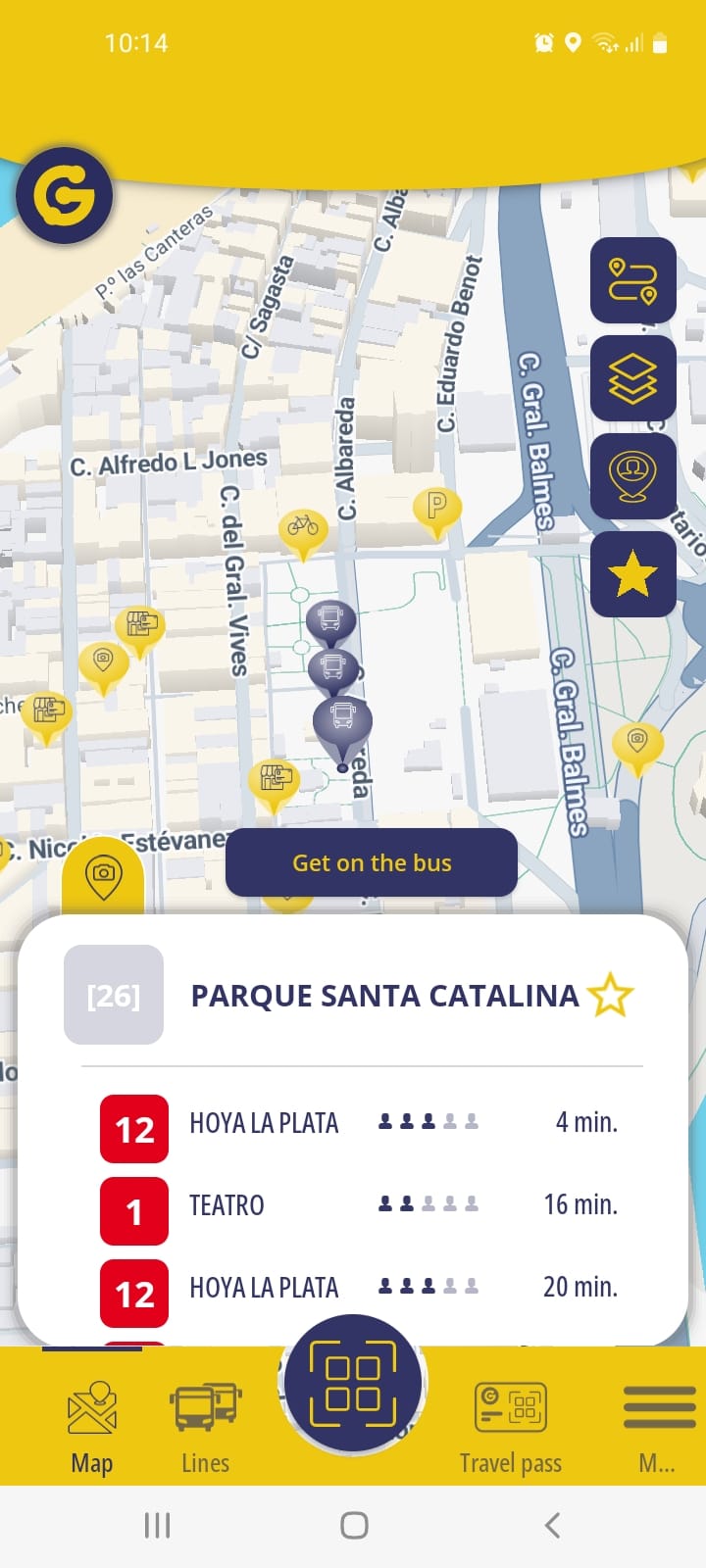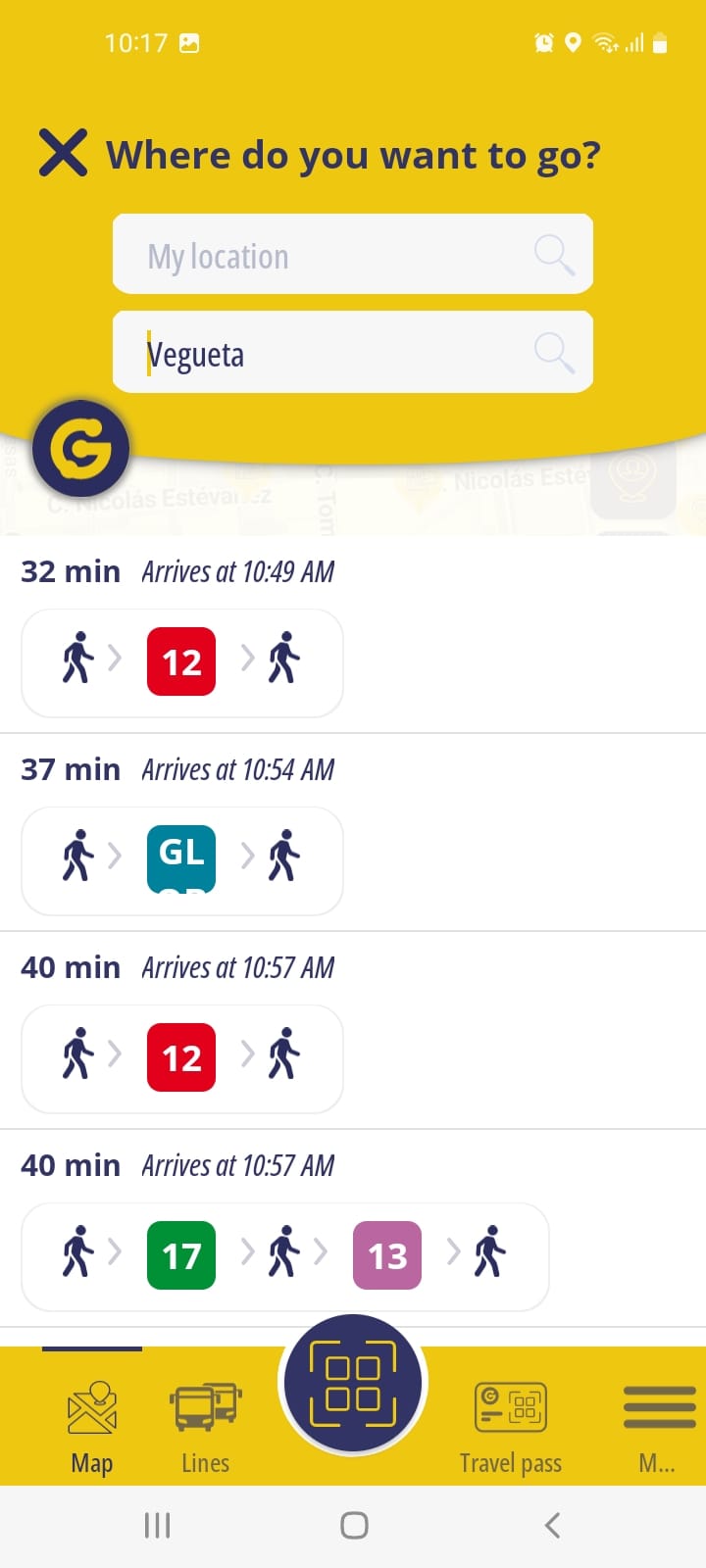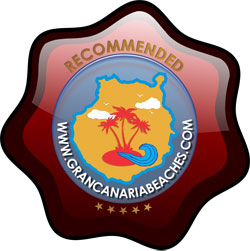Gran Canaria Buses: Fast, Efficient, and Safe
Moving around in Gran Canaria buses is cheap, safe, and fun! I do it all the time. You don't have to worry about parking or getting lost (and if you do, it doesn't matter because there is generally a bus stop to go in the opposite direction nearby). Drivers and passengers are friendly and are always willing to help tourists visiting the island, so don't be shy.
There are three kinds of public Gran Canaria buses, each painted differently. The teal-coloured ones cover the routes from one town to another. The yellow ones only operate inside the capital, Las Palmas. The red, open-top ones are meant for tourists, pick them up near the harbour, and take them around the capital city. Some small towns also have their own buses but only operate a few routes near and around those towns.
"Global" or the Blue Gran Canaria Buses

These Gran Canaria buses go from various towns of the island to the capital, Las Palmas de Gran Canaria. Some of them also go from small towns to other towns.
The ticket cost will depend on where you get off (tell the driver). It is rare to stand on this bus, except for a few days in the summer. These buses are very punctual, and I highly recommend them.
How to get from Puerto Rico to Las Palmas: Take bus line 91. Trip lasts about an hour and costs 7.20 euros per person.
How to get from Maspalomas or Playa del Ingles to Las Palmas: Take bus line 30. Trip lasts about an hour and it leaves every twenty minutes. Here are the ticket costs:
Maspalomas – Las Palmas de G.C. (San Telmo): 5.85 euros per person
Maspalomas – Las Palmas de G.C. (Santa Catalina): 6.45 euros per person
Playa del Ingles - Las Palmas de G.C. (San Telmo): 5.30 euros per person
Playa del Ingles - Las Palmas de G.C. (Santa Catalina): 5.95 euros per person
From Maspalomas to Las Palmas de G.C. (San Telmo) you can also take bus number 05 which makes very few stops and gets you there very fast.
Here are the buses you can take from the airport:
Line 66 - Airport – Maspalomas lighthouse: 3.85 euros per person
This bus is once an hour (twenty past the hour), and if you don’t want to wait, you may consider walking up to the motorway and catching line number 30 which is more frequent.
Once you are at the main underground bus station (San Telmo) , you can switch buses to go to El Corte Ingles or Las Arenas shopping centre. Usually, tourist guides and guidebooks will tell you to leave the underground bus station and catch the yellow buses upstairs, but I recommend staying underground and catching another Global bus. You can take any of the following Global buses, and remember to sit near the driver so he can tell you where to get off 103, 105, 116, 117, 206, and 210. It is a 10-15 minute journey and we don’t want you landing in a village far away.
Many people who arrive from the southern part of the island, prefer to get off at the Teatro bus stop. It is conveniently located. You hardly have to walk if you want to get a taxi or transfer to a yellow bus.
For updated information about the "Global" bus lines, you can check out their website (in English, German, and Spanish).
"Guaguas Municipales" or the Yellow ones
These are the Las Palmas de Gran Canaria buses and only move around in the city. They are generally overcrowded (especially at peak hours) and you may have to go standing, but it doesn't really matter, as most trips don't last more than 20 minutes. Buses are of different sizes, depending on how popular the route is. Bus stops with big screens tell you when the next bus is due, across many parts of the capital.
A ticket costs 1.40 euros, and can be bought from the bus driver. It doesn't matter where you get off, it will always cost the same. Under 4-year-olds are free. If you want to save, you can buy a ten-ticket card, which costs 8.50 euros, and is available at the San Telmo bus station, at the Santa Catalina park, and at some newspaper shops. One card can be used for various people. The card can be used till the end of the year, which is when rates change (sometimes). This card is called "bono guagua." New machines that sell these cards have been put in all the bus terminals. Euro notes, as well as coins, are accepted.
The website of "Guaguas Municipales," which means "municipal buses," has been thoroughly renovated and translated into English. There is a handy form located in the top right corner that tells you which bus to catch, depending on where you want to get on and off. You can also top up your bus cards online with your debit or credit card.
The new "Guaguas Municipales" smartphone app is worth downloading. You can see the nearest bus stop, view the arrival time of the next bus, and check its current occupancy. You can download it by visiting this link for Android phones and iOS devices. You can also pay for the bus using the app, but the QR codes it generates often fail to scan correctly on the bus. We recommend avoiding this feature until it is more reliable. Stick to paying either cash to the driver, a bus pass card, or using your credit/debit card.
 The new (and free) Guaguas Municipales app lets you see when the next bus is arriving and how full it is
The new (and free) Guaguas Municipales app lets you see when the next bus is arriving and how full it is The journey planner suggests the options you have to get from where you're now to your destination. In this case, we wanted to go to the Old Town (Vegueta).
The journey planner suggests the options you have to get from where you're now to your destination. In this case, we wanted to go to the Old Town (Vegueta).Gran Canaria Buses: Best Bus Pass for Tourists (Highly Recommended!)
If you're a tourist visiting Las Palmas de Gran Canaria and love to plan your own journey, the yellow bus company has two fantastic bus passes. They're known as "Tarjeta Turística". Here are a few highlights:
- There are two types: One lasts for a day (5 euros), and the other for 3 days (12 euros). This is great value for your money.
- Time starts counting the moment you board the first bus.
- Each person must buy one; you can't share the pass.
- They allow unlimited trips.
- Buses are frequent, so you won't have to wait forever.
- The "Tarjeta Turistica" is available at all the bus terminals (Teatro, San Telmo, Santa Catalina, Manuel Becerra), at information points, and from a couple of hotel receptions.
Here are the drawbacks of this bus pass:
- Only available offline. If you go to the bus terminals to buy it, you may have to wait in line.
- Buses can be overcrowded at times. If you see that the bus is crowded, just wait for the next one. Many bus stops have screens that let you know when the next bus is due. You can also check on their mobile app or website, by inputting the bus stop number.
- If you're not planning to do at least 5 trips a day, then this card is not for you. You can pay the full fare (1.40 euros) or go for the regular bono guagua instead For 8.50 euros and at 0.42 euros each trip it is worth it if you are going to stay for a few days and don't want the pressure to take bus rides. You can share it (i.e. pay for other family members, friends, etc.), and the pending money is never lost, e.g. if you come back again next year. This pass can be ordered online and downloaded to your phone.
Our rating: 5 stars - Updated on February 2024.

Check this tourist bus pass out by clicking here.
In this video, local celebrities encourage everyone to use public transportation:

The bus company shows how it has improved things in the last couple of years, in the video below. It's in Spanish but with English subtitles.

Tourist Sightseeing buses or the Red ones
The third kind of Gran Canaria buses, are the red double-decker open top ones. These are for tourists visiting the capital of Gran Canaria, and allow you to hop on and hop off during a 24 or 48 hour period once you buy a ticket. They are operated by Worldwide City Sightseeing, so you might have seen them in other cities. The complete trip lasts about 90 minutes, and shows you most of the important places in the city.
Here are the ticket costs:
- Adult: 25 euros
- Child (5-15yrs): 15 euros
- Adult 2 day: 40euros
- Child 2 day: 30 euros
With every ticket, you get a pair of free earphones, so you can listen to details about each place you visit. The commentary can be listened to, in 8 different languages (English, Spanish, French, German, Italian, Japanese, Swedish, Norwegian).
Here are the bus stops for the red buses:
1) Parque Santa Catalina
2) El Corte Ingles
3) Pueblo Canario
4) Vegueta & the Cathedral
5) Teatro Perez Galdos
6) Main bus station (San Telmo)
7) Santa Catalina Harbour
8) Elder Museum in Santa Catalina park
9) Las Canteras beach
10) Paseo de la Cornisa
11) Auditorio Alfredo Kraus Concert Hall
First tour starts at 10:00 and the last one starts at 17:00. The frequency is every 35 minutes from 10 a.m. to 2 p.m. and every 45 minutes until 5 p.m. These tours are available all year round.
How to Pay for the Gran Canaria Public Buses
If you're visiting the island for the first time, there's no need to get a bus pass. Drivers accept cash and debit/credit cards. Here are a few tips:
If you're paying with cash, try to have loose change, because they can refuse to take a "big" 50 euro note. Twenty-euro notes are fine.
If you're paying with a debit/credit card, show it to the driver and then place it on the reader on the left of the driver in the yellow buses, or on the driver's reader (blue buses). You won't receive a receipt; instead, you'll get a "thumbs-up" from the driver to save time.
Getting In and Out
These instructions may seem common sense, but there are a few countries where people enter or exit through any door.
- Enter from the front door and pay the driver, or tap your card against the bus pass reader.
- To exit, ring the bell before your stop and use the rear doors. After you ring the bell, a sign at the front of the bus will light up, indicating to everyone that the bus will stop, and reads "Parada Solicitada" (requested stop).
Gran Canaria Buses Hotline
If you have any questions about timetables or routes on the yellow or Global buses, you can dial the following number, and an English speaking operator will be happy to help you out.
+34 928 25 26 30
Gran Canaria Buses Updates
- Starting on the 8th of February 2023 face masks are no longer needed in all public transport (buses and taxis)
- Cash and cards are accepted
- Most bus lines are operating just like pre-Covid
Gran Canaria Buses: Getting a Seat
Starting from February 2024, residents who use the buses a certain number of times (30 rides every 3 months), don't need to pay. At peak hours, buses can be crowded, due to high demand. They may not stop to pick up passengers if they're overfull. If they do stop, you will probably have to go standing.
If you're going for a long ride in the blue buses, here are a few tips to get a seat (without faking a disability ;) if you don't like to go standing:
1) See where the bus starts and get there early. Places like the Maspalomas lighthouse bus terminal, or the San Telmo bus station, are where the popular lines start or end.
2) If you have a health issue, ask the driver to get you a seat.
3) You can ask a seated passenger to give you his/her seat. Most Gran Canarians are happy to help.
4) Sit on the exit stairs. Although this isn't the best option, people do it. The main drawback is that they have to get out of the way every time someone wants to get off.
Need a car to reach the best beaches?
From €14/day • Full insurance included • Free cancellation
Find the Cheapest Car →
New! Comments, Questions?
Have your say about what you just read! Leave a comment in the box below.